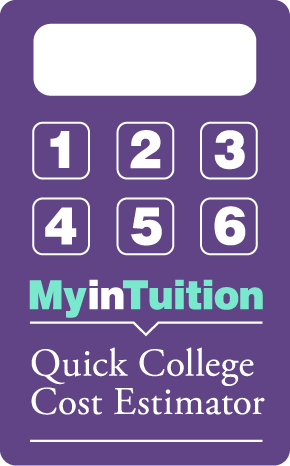As Dean of Admission and Financial Aid Katie Fretwell ’81 can attest, discussions about how much prospective students and/or their families can expect to pay for an Amherst education can often be confusing, complicated and emotional for the uninitiated. Today, those conversations may get a little bit easier.

The tool has other significant advantages. It is available in Spanish, making it accessible to many more families across the country and around the world. And given that the expected student loan portion of the financial breakdown will always be $0, it underscores that Amherst students may graduate debt-free.
“Our hope is that MyinTuition will allow prospective students and their families to engage with the College earlier in the research process with a clearer understanding that an Amherst education is a financially feasible option,” said Fretwell. “The sooner we can begin a conversation, the better.”
Some students go to the College’s website, see a dollar figure and make an assumption that Amherst is out of reach financially, when that is often not the case, explained Dean of Financial Aid Gail Holt. The average aid package last year was around $50,000, she said, and nearly 60 percent of students received some amount of aid. “MyinTuition will definitely help us drive home just how generous our financial aid program is.”
For years, prospective students have been able to more specifically estimate their cost to attend Amherst by plugging detailed financial information into the College’s Net Price Calculator, which will remain on the website, added Holt. “Prospective students can start the process with MyinTuition. Then families who need or want more precision can use our own Net Price Calculator. The two tools work very well together.”
Initially developed in 2013 by Wellesley College economics professor Phillip Levine for the Wellesley website, MyIntuition was adopted two years later by Williams College and the University of Virginia. In the years since its launch, it has been honed and improved, and 11 other schools in addition to Amherst have added the tool to their own websites. These include Bowdoin, Dartmouth and Pomona colleges, and Columbia, Rice and Wesleyan universities.
In a New York Times piece today about MyinTuition, columnist David Leonhardt wrote that “the widespread misimpression about the cost of college causes real damage. It leads many middle-class and lower-income families to believe, incorrectly, that college is unaffordable.” MyinTuition, he said, “combats misimpression with fact. It’s also highly useful for families up and down the income spectrum.”
Holt agreed. “Anything that gives prospective students and their families even the most general sense of how affordable college is at the beginning of the application process can be a real win for them—and for Amherst, too.”